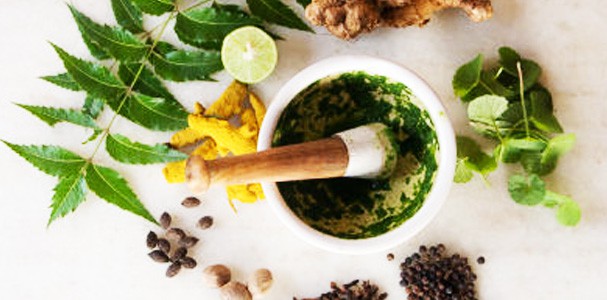Ayurveda is currently the wellness buzzword that’s being used around by lots of bloggers alternative medicine experts and practitioners, It-girls and Instagrammers all alike. Sure, you’ve encountered the term “oil pulling” quite a few times, but do you really understand what that term means?
Basically, Ayurveda is a part of an ancient health and alternative medicine practice, but in reality, it is so much more than just swirling oil inside your mouth. Ayurveda is grounded in an Indian tradition that’s thousands of years old. In fact, Ayurveda is one of the most popular and most practiced systems of medicines in the entire planet. So yes, you can start thanking this practice for bringing in a bunch of trendy health habits which include massage and yoga.
Below is a compilation of everything beginner about the practice of Ayurveda as explained by Larissa Carlson, an Ayurveda expert and also the Dean of the Kripalu School of Ayurveda. According to her, Ayurveda is a type of alternative medicine that mainly centers on the use of natural treatments which include yoga, massage and herbalism as well as recommendations in diet and lifestyle.
The Differences Between Ayurveda and Western Medicine
As expected, there are tons of differences between Western medicine and Ayurveda practice, however, it can be said that in the greatest sense, the two works to support each other.
Ayurveda’s niche is in the prevention of diseases and the maintenance of good health. This is done by emphasizing practices that are geared towards self-care such as providing seasonal cooking recommendations, practicing mindful eating habits, and taking good care of your sense organs by doing tongue scraping, neti pot, abhyanga and more. Ayurveda also pushes for the practice of yoga and other exercise routines that are helpful in relieving physical and mental stress. On the other hand, modern medicine is more of surgery and medications; more suited for conditions that are already in disease phase.
What does Ayurvedic practitioners do?
Like with most other professions, Ayurveda practitioners come in different levels and will depend on their qualifications. The most basic will be an Ayurvedic Health Counselor—one who checks on your diet and makes helpful lifestyle and exercise recommendations. Next up is an Ayurvedic Practitioner, and then after is an Ayurvedic Doctor; both may have the propensity to include more of herbal remedies for their treatment recommendations.
What can you expect from your first Ayurvedic session/experience?
An Ayurveda session, bear in mind, does not come in cheap.
Usually, a 90-minute session with an Ayurveda practitioner can cost you around $125-200.
Clients are first requested to complete a “dosha” – a list of questions which can provide information regarding their lifestyle, diet and exercise. The Ayurveda consultant the n might offer a few recommendations in order for the client to achieve “physical balance and mental harmony”. Often these suggestions include food items to go for and avoid, self-care methods, spices and teas to support proer digestion, or breathing techniques to help pacify the mind.
How do you find your dosha?
In Ayurveda, dosha refers to 3 energies that are believed to be circulating in the body. Each person has three doshas
that come in varying proportions—and you will be dominated by two of these.
Those three doshas (vata, pitta, and kapha) are essential
energies that govern the seasons of the year as well as rule
specific functions in your mind and body. These doshas are
originally positive forces, but they can also cause
someone to suffer due to poor diet and lifestyle choices.
The Three Doshas (Vata, Pitta, Kapha)
Vata is equivalent to being light, mobile and cold. It rules the cold, dry season of late fall going on to winter. The people who have mostly vata in their dosha appear to be more enthusiastic, creative, social and talkative. When vata people subject themselves to unhealthy eating habits and poor diet, it can result to the drying of their hair, skin, and nails. They can also experience constipation and bloating.
Pitta people tend to be witty, goal-oriented and organized. Poor diet and lifestyle choices may result to acid reflux,
anger and inflammation.
Kapha people are usually grounded, generous, dependable and caring. However, if subjected to poor lifestyle choices and diet, they can experience side-effects such as water retention, congestion, weight gain, sluggishness and lack of motivation.
